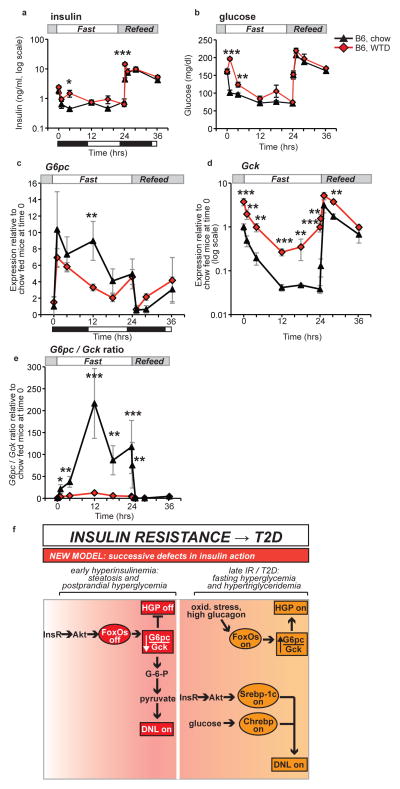Figure 4.
Pathophysiology and model. (a) Insulin and (b) glucose during F–RF in C57BL/6J mice fed chow or WTD for one week. n = 5 per group. (c) G6pc expression (d) Gck expression (e) G6pc/Gck ratio from chow and WTD–fed C57BL/6J mice during F–RF. Expression in chow–fed mice at time 0 is set equal to 1.n = 5 per group. Black and white bars indicate the dark/light cycle. *P < 0.05; **P < 0.01; ***P < 0.001 for chow vs. WTD–fed mice by Student’s t tests (2–tailed). (f) Model of the progression of insulin resistance and type 2 diabetes. The current model suggests bifurcation of insulin signaling, such that the FoxO branch is resistant to insulin and the Srebp–1c branch is excessively activated by hyperinsulinemia. We propose a new model, with successive defects in hepatic insulin action. In early hyperinsulinemia, FoxOs are strongly suppressed, thereby decreasing the G6pc/Gckratio and activating lipogenesis. Later in disease progression, the Srebp–1c and Chrebp pathways are activated by insulin, whereas FoxOs may be activated by other mechanisms, e.g. oxidative stress induced acetylation or glucagon–induced alternative phosphorylation.

